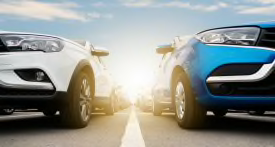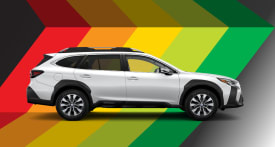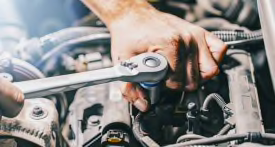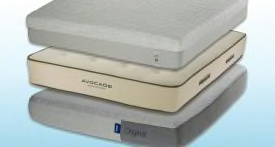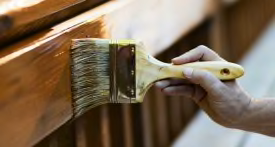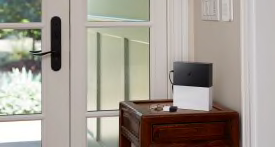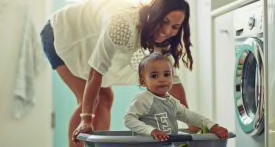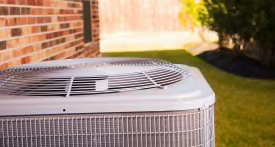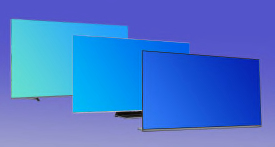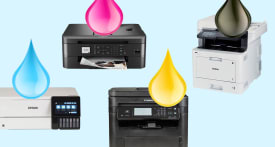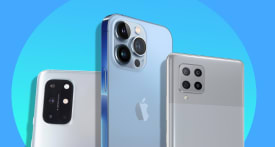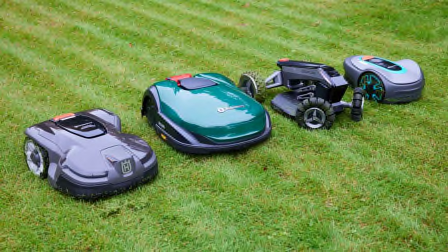Automakers Move to a Common Plug Standard to Allow Their EVs to Use Tesla Superchargers
Many of Tesla's Superchargers are now open to electric cars from other automakers using an NACS adapter
Until recently, Tesla’s network of Supercharger fast electric car chargers has been off-limits to drivers of electric vehicles from other brands. But Tesla has opened up certain Superchargers to Ford Mustang Mach-E and F-150 Lightning and Rivian R1S and R1T vehicles, as long as owners order an adapter that allows them to use Tesla’s NACS charging standard. Other EV makers aren’t far behind.
BMW, Genesis, General Motors, Honda, Hyundai, Jaguar, Kia, Lucid, Mini, Mercedes-Benz, Nissan, Polestar, Toyota, and Volvo have said that their vehicles will also be Supercharger compatible starting in 2024. Mazda, Stellantis, and Volkswagen Group of America (Audi, Porsche, Scout Motors, and Volkswagen) will implement Tesla’s North American Charging Standard (NACS) connector on vehicles starting in the 2025 model year.
It is not yet clear how these plans will be affected by recent uncertainty involving Tesla’s Supercharger program, including decisions to lay off then rehire employees working on the charging network, as reported by The Information and Bloomberg. In a post on X, formerly known as Twitter, Tesla CEO Elon Musk initially said that the company “still plans to grow the Supercharger network, just at a slower pace for new locations.” A little over a week later, Musk said Tesla would spend over $500 million expanding the network to create thousands of new chargers in 2024.
Other automakers are also getting into the charging business. A group of seven major car manufacturers announced last year that they plan to open 30,000 of their own charging stations across the U.S. in the near future under the Ionna brand name.
- Why Is Tesla Opening Up Its Superchargers to Other Brands?
- Which Non-Tesla EVs Can Charge at Superchargers?
- Can Non-Tesla Cars Charge at Any Supercharger?
- When Will the Partner Companies Have Access to the Superchargers?
- What Will It Be Like to Charge a Non-Tesla at a Supercharger?
- How Much Will It Cost to Charge a Non-Tesla at a Supercharger?
- How Fast Will Cars With CCS Plugs Charge at Superchargers?
- What Does Opening Up the Supercharger Network Mean for Tesla Owners?
- Do Other Automakers Have Their Own Chargers?
- What About Buying a Car That Uses CCS?
Considering a Plug-In Hybrid or Electric Vehicle?
Why Is Tesla Opening Up Its Superchargers to Other Brands?
There are at least a few reasons: In order to qualify for a slice of the $7.5 billion earmarked for EV charging network expansion in the 2021 Bipartisan Infrastructure Law, which was designed to address climate change, healthcare, and taxes, Tesla has said it will open up 7,500 chargers from its Supercharger and Destination Charger network to non-Tesla vehicles by the end of 2024, a project that is already in progress. Tesla also benefits when other vehicles pay to use its Superchargers, and experts say charging could become an important source of income for the automaker. On its website, Tesla says that it has “always been our ambition to open the Supercharger network to non-Tesla EVs, and by doing so, encourage more drivers to go electric,” and that the company aims to eventually open all Superchargers to all EVs.
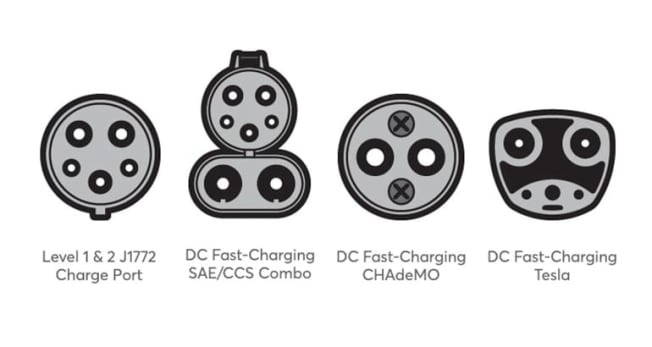
Illustration: Chris Philpot Illustration: Chris Philpot
Which Non-Tesla EVs Can Charge at Tesla Superchargers?
It depends on the type of Supercharger and whether your car has a NACS charger or adapter.
Any non-Tesla EV except for the Nissan Leaf and Mitsubishi Outlander PHEV (which use an incompatible plug standard called CHAdeMO) can currently charge at one of the limited number of Tesla Superchargers that offers a Magic Dock adapter. The Magic Dock enables EVs with a Combined Charging Standard (CCS) plug (most non-Tesla vehicles) to use Tesla’s chargers, which are designed for its North American Charging Standard (NACS) plugs. Tesla says more Magic Docks may be installed at more Superchargers in the future, although the number of chargers hasn’t grown significantly since the initial announcement earlier this year. Additionally, Magic Dock users must use the Tesla app instead of enjoying the seamless experience of simply plugging in for payment. On Tesla’s map of chargers, Magic Dock Superchargers are listed as “Superchargers Open to Other EVs.”
However, most automakers have announced that owners of their EVs will also have access to more than 15,000 of Tesla’s NACS-equipped Superchargers beginning this year. These “V3” Superchargers will work only on non-Tesla vehicles with a NACS adapter or with a built-in NACS charging port. As of March 2024, this is only Ford vehicles with a Ford Fast Charging Adapter and Rivian vehicles whose owners ordered a free NACS-to-CCS adapter through an in-vehicle notification. You can find these chargers on Tesla’s map listed as “Superchargers Open to NACS.”
The following automakers have announced that they will adopt Tesla’s NACS charging standard on their upcoming models, which will allow them to plug in at many newer Superchargers even without the Magic Dock, giving owners more options when they’re far from home.
• BMW, Mini, and Rolls-Royce will adopt NACS on their EVs starting in 2025. Vehicles from those brands will get access to Tesla Superchargers that same year.
• Ford says that the current F-150 Lightning and Mustang Mach-E are already able to plug into Tesla Superchargers using an adapter starting now, and that new EVs will come with NACS charging ports starting in 2025. Existing owners can order a free Ford Fast Charging Adapter on Ford’s website or through the FordPass app through June 30, 2024. After that, a charger will cost $230.
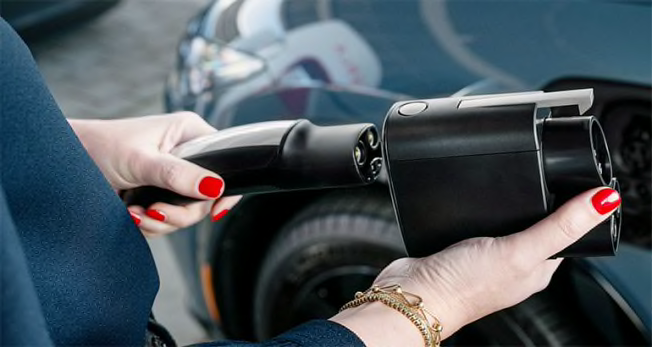
Photo: Ford Photo: Ford
• General Motors (parent company of Buick, Cadillac, Chevrolet, and GMC) says that owners of GM EVs will be able to access 12,000 Tesla Superchargers “and growing” starting in early 2024 using an adapter. New vehicles will get built-in NACS charging ports starting in 2025.
• Honda says it is planning to launch a new EV model in North America in 2025 that will be equipped with an NACS port, and that all future Honda EVs will adopt the NACS standard. EV models launched in North America before 2025 will be equipped with a CCS port and an NACS adapter.
• Hyundai and Genesis say that all-new or refreshed Hyundai and Genesis EVs will come exclusively with an NACS port beginning in the last months of 2024 in the U.S., and in early 2025 in Canada.
• Jaguar says that it will fit all new EVs with NACS connectors starting in 2025, and will make adapters available for existing I-Pace vehicles.
• Kia says that starting in 2024, new Kia EVs will get a standard NACS connector, with CCS-to-NACS adapters available for older vehicle starting in 2025. Kia EV owners will be able to access and pay at Tesla’s Supercharger network via the Kia Connect app after a software upgrade.
• Mazda says it will adopt the NACS charging ports on electric vehicles launched from 2025 onward.
• Mercedes-Benz says that existing EVs will be able to plug into a Supercharger using an adapter starting in 2024, while NACS ports will be installed on new cars starting in 2025. In addition, the automaker is building its own charging stations that will feature NACS and CCS plugs and be open to all types of EVs.
• Nissan says that it will adopt NACS for the Ariya and future EV models starting in 2025. For 2024, Ariya owners will get an NACS adapter. Unlike the Leaf, the current Ariya already has a CCS charging port.
• Polestar, which along with Volvo is owned by Geely, says existing vehicles will be able to use adapters to plug into Superchargers in “mid-2024,” while new Polestar vehicles sold in 2025 will have NACS ports installed by default, and will get a CCS adapter to use existing CCS charging infrastructure.
• Rivian says a free adapter allows the current R1T and R1S to plug in at Superchargers as of March 18, 2024, while 2025 and newer vehicles will get NACS charging ports built in. Owners can order an adapter through an in-car notification.
• Stellantis (parent company of Alfa Romeo, Chrysler, Dodge, Fiat, Maserati, and Ram) will adopted the NACS connector started with select models in 2025. During the transition, the automaker will make adapters available for vehicles fitted with the Combined Charging System (CCS) port.
• Toyota says that Toyota and Lexus EVs will have access to Tesla Superchargers and that new Toyota and Lexus vehicles will adopt NACS starting in 2025. Owners of existing Toyota and Lexus EVs will get NACS adapters at that time as well.
• Volkswagen Group of America brands—Audi, Porsche, Scout Motors, and Volkswagen—will implement the NACS standard on vehicles starting in the 2025 model year. The automaker is exploring adapter solutions to allow owners with prior model-year vehicles to also access the Superchargers.
• Volvo says that drivers of XC40 and C40 Recharge vehicles and 2024 EX30 and EX90 vehicles will be able to use Tesla Superchargers using an adapter in the first half of 2024, while NACS ports will be installed by default in 2025.
Can Non-Tesla Cars Charge at Any Supercharger?
No. For automakers that are partnering with Tesla, only about 15,000 of Tesla’s more than 17,000 Supercharger ports will be available to vehicles with NACS ports or adapters. According to automakers and industry analysts, these will be V3 Superchargers, which were installed in 2019 or later, or upcoming V4 Superchargers. Older Superchargers will not work with non-Tesla vehicles.
When Will the Partner Companies Have Access to the Superchargers?
After Ford and Rivian, we expect more automakers to have available NACS adapters in mid-2024. Ford has said that Tesla is the one responsible for developing the necessary NACS-to-CCS adapters. Tesla doesn’t respond to questions from the media, but the company has often missed expected release dates for new products, including the new Tesla Roadster and Cybertruck.
In addition to needing the adapter, automakers are writing new software that allows non-Tesla vehicles to work with the Supercharger software. “You’re going to have a software update in most of these vehicles in order to have the vehicle communicate with the Superchargers,” says Sam Abuelsamid, principal research analyst at consulting firm Guidehouse Insights.
What Will It Be Like to Charge a Non-Tesla at a Supercharger?
In addition to their placement in high-traffic areas, Tesla chargers are also extremely easy to use. “When you plug into a Supercharger you don’t have to swipe a card, there’s no screen—you just plug it in and it starts charging, and it charges your account,” Abuelsamid says. But there’s no guarantee that non-Tesla owners will have such a seamless experience.
Tesla says that owners of non-Teslas will have to use the Tesla app to access and pay for charging at a Supercharger.
There could also be compatibility issues. Today, Superchargers need to communicate with Teslas only to initiate charging and process payments. But when those Superchargers open up to EVs from other automakers, they will have to communicate with software and hardware from various non-Tesla brands. “A big part of the reason Tesla’s network was so reliable is that it was a closed system that Tesla completely controlled,” says Chris Harto, CR’s senior energy policy analyst.
At the limited number of Magic Dock-equipped Superchargers we have already tried out, CR had no issues with the app, which automatically releases the CCS adapter attached to the NACS plug.
But we also found a major physical issue: All Teslas have their charging ports in the same place—on the driver-side rear corner. But in vehicles that have ports in different spots, the cord might not reach unless the driver parks awkwardly. On its website, Tesla acknowledges this issue, and says that owners of non-Tesla EVs “might have to park over the line in order to charge comfortably,” and asks them to try to obstruct as few charge posts as possible. Newer V4 Superchargers are being designed to reach more EVs from more brands.
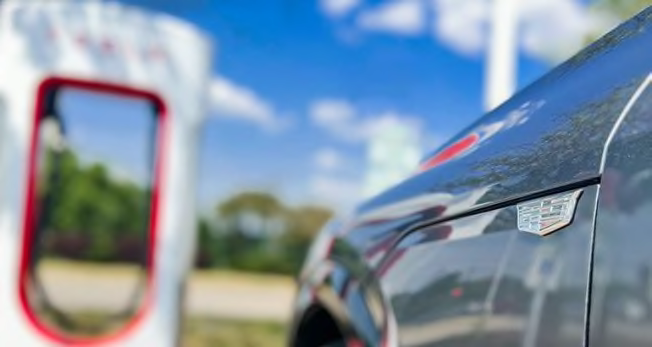
Photo: Cadillac Photo: Cadillac
How Much Will It Cost to Charge a Non-Tesla at a Supercharger?
There are two potential costs here: the price of an adapter and the cost of charging. Ford is offering free adapters until June 30, 2024, but after that will charge $230. We expect other automakers to charge a similar amount.
As far as the cost of charging is concerned, rates differ depending on the station and time of day, and whether owners of non-Tesla EVs have paid for a membership. As of December 2023, charging a non-Tesla with a Supercharger is one of the most expensive fast-charging options per kilowatt-hour: The currently available spots we’ve charged at ranged from 48 to 55 cents per kWh. Most are 50 cents per kWh, which is similar to Electrify America’s 48-cents-per-kWh non-subscription price. Tesla stations will drop to 40 cents per kWh with a $13-per-month Supercharging Membership. Idle fees, which are charged if the car is left alone at the charger after being fully charged, are $1 per minute.
Tesla says that Tesla owners will get the lowest rate at a Supercharger, while non-Tesla owners will pay Tesla rates if they pay for a Supercharging Membership.
How Fast Will Cars With CCS Plugs Charge at Superchargers?
It depends on the car, but in our tests of non-Tesla vehicles at a few of the small number of Magic Dock-equipped Superchargers already out there, we found that non-Tesla EVs charged at a slower rate at Superchargers than they are claimed to be capable of charging at other DC fast chargers. For example, the Mercedes-Benz EQE we charged never went above 76 kilowatts, even though it is rated for 170 kW. That means it would take more than twice as long—over 45 minutes—to charge from 20 percent to 80 percent at a Supercharger as it would with another DC fast charger.
Because Tesla chargers are rated at 480 volts, vehicles with 800-volt charging infrastructure won’t be able to charge as fast as they could at chargers designed for them. These vehicles include the Audi E-Tron GT; Genesis GV60, Electrified GV70, and Electrified G80; Hyundai Ioniq 5; Kia EV6; Lucid Air; and Porsche Taycan. The Lucid Air we tested was limited to a 49-kW rate, which meant it would take well over an hour to add 200 miles of range, instead of the 12 minutes Lucid claims under ideal conditions at a different charger.
It is unknown how this will affect upcoming GM models like the Chevrolet Silverado EV, which need 800 volts to meet charging claims. However, there aren’t as many 800-volt fast chargers out there as there are Superchargers, so owners of 800-volt-equipped vehicles will still benefit from the increased charger availability.
What Does Opening Up the Supercharger Network Mean for Tesla Owners?
As hundreds of thousands of EVs gain access to Superchargers, Tesla owners may find themselves waiting in longer lines. “It does limit the competitive advantage on charging for Tesla owners,” Harto says.
There has been little friction in countries where Tesla Superchargers already offer CCS access, says Shelley Francis, DrPH, co-founder and managing partner of EVNoire, an organization that advises businesses and governments on EV adoption, and co-founder of EVHybridNoire, which represents diverse EV drivers and enthusiasts.
“In speaking to our members in the U.S. who are Tesla drivers, it’s definitely a concern,” she says. “However, in speaking to members and Tesla drivers in Europe where CCS ports are open to other brands, it didn’t seem to present the disruption that many thought would come.”
Both ChargePoint and Electrify America announced they are adding NACS chargers to their stations in the future, as well, so current Tesla owners will have more stations to choose from. That will be a benefit to them only if those charging companies get their acts together and improve reliability, Abuelsamid says. “Hopefully the competition from Tesla will incentivize those other companies to do a better job,” he says.
Do Other Automakers Have Their Own Chargers?
BMW, General Motors, Honda, Hyundai, Kia, Mercedes-Benz, and Stellantis (parent company of Alfa Romeo, Chrysler, Dodge, Fiat, Jeep, and Ram) announced that they plan to open 30,000 DC fast chargers across the U.S. and Canada as part of a joint venture under the Ionna brand name. These chargers will be open to all EVs, regardless of manufacturer.
The first of these chargers will open in the U.S. in the summer of 2024. The automakers involved with the project say that they will be located in high-traffic areas, feature multiple chargers per station, and have both NACS and CCS chargers available. Like Tesla’s Superchargers, they will be designed to work reliably and without apps or payment cards.
What About Buying a Car That Uses CCS?
Although buying a car with a built-in NACS port will get you access to some Tesla chargers without an adapter, CCS isn’t going away anytime soon. “It seems like CCS will still be supported for a good while on most charging networks that already supported it,” Harto says. “Most new, non-Tesla charging infrastructure seems like it will now have both ports.”
Regardless of manufacturer, Tesla’s brand recognition could definitely rub off on vehicles with Supercharger access, Francis says. “The perceived simplicity of the Tesla charging network could be a great selling point for all brands utilizing the NACS,” she says.
